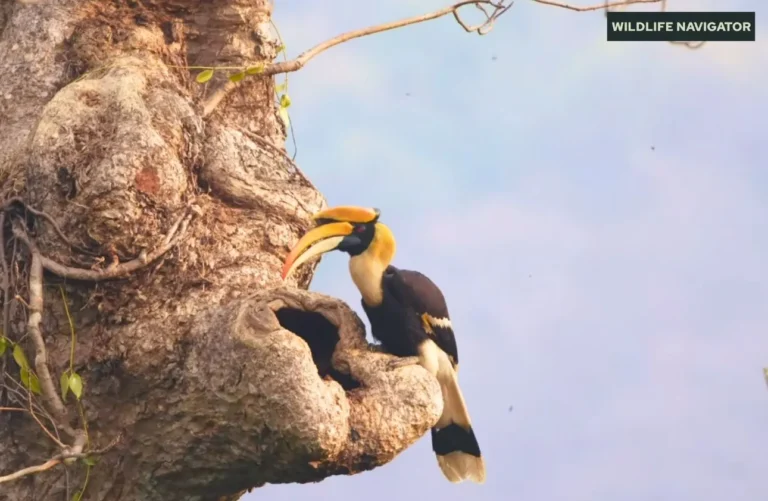Thiruvananthapuram Zoo | Trivandrum Zoo, Animals, Timings, Entry Fees & Visitor Guide

Thiruvananthapuram Zoo—popularly known as Trivandrum Zoo— is nestled in the heart of Kerala’s capital city & is one of the oldest zoological parks in India. Established in 1857 by the Maharaja of Travancore, this heritage-rich zoo is not just about wildlife but also about history, architecture, and natural beauty. Spread across 55 acres of lush greenery, the zoo forms part of the Napier Museum compound, creating a unique blend of cultural and natural attractions in one place.
Unlike many modern zoos built purely for showcasing animals, Thiruvananthapuram Zoo has a distinctive colonial charm, with landscaped gardens, natural lakes, and architectural structures that make every corner worth exploring. Today, it houses a wide variety of species—from majestic tigers and lions to exotic giraffes and hippos, as well as an impressive collection of birds and reptiles.
For travellers, families, students, and wildlife enthusiasts, a visit to this zoo is not just a casual outing but an educational and cultural journey through Kerala’s rich heritage and biodiversity.
History & Heritage of Thiruvananthapuram Zoo
Thiruvananthapuram Zoo holds the honour of being one of the oldest zoos in India, tracing its origins back to the mid-19th century. It was established in 1857 by Maharaja Swathi Thirunal Rama Varma of Travancore, who was known for his progressive vision and love for arts and sciences. Initially, the zoo was part of a grand project that included a museum, park, and botanical garden, designed to reflect the cultural and natural wealth of the region.
The early structures and layout were influenced by European architecture, especially during the tenure of British resident General Cullen and later the contribution of Napier, the then Governor of Madras Presidency, after whom the Napier Museum was named. The zoo was designed not just as a collection of cages but as a naturalistic park, making it one of the first zoological parks in India to adopt open enclosures instead of traditional iron-bar cages.
Over the years, the zoo has undergone several modernisation projects. The enclosures have been expanded and redesigned to mimic natural habitats, ensuring better animal welfare and visitor engagement. Despite these modern updates, the zoo has carefully preserved its colonial-era charm and heritage structures, giving visitors a feeling of stepping back in time.
Today, Thiruvananthapuram Zoo stands as a living heritage site, where history, culture, and wildlife meet seamlessly. It tells the story of Kerala’s royal past while continuing its mission of conservation, education, and recreation.
Location & How to Reach Thiruvananthapuram Zoo
Thiruvananthapuram Zoo is conveniently located in the heart of Kerala’s capital, inside the Napier Museum compound on Museum Road, Palayam. Its central location makes it easily accessible from almost anywhere in the city, allowing visitors to combine their wildlife adventure with a cultural tour of Thiruvananthapuram.
- By Air: The Trivandrum International Airport (TVC) is just about 8 km from the zoo, making it the fastest way for travellers coming from other cities or countries. Taxis, auto-rickshaws, and app-based cabs are readily available from the airport.
- By Train: Thiruvananthapuram Central Railway Station is approximately 5 km away. Local buses, taxis, and auto-rickshaws provide convenient access to the zoo.
- By Road: The zoo is well-connected by city buses and private vehicles. Visitors can easily reach it via the NH66 highway or the city’s main roads. Parking facilities are available near the entrance for those driving their own vehicles.
Layout & Facilities of Thiruvananthapuram Zoo
Thiruvananthapuram Zoo is thoughtfully spread over 55 acres, combining natural landscapes with carefully designed animal enclosures. Unlike many urban zoos, it emphasises open spaces, greenery, and lakes, giving visitors the feeling of exploring a miniature wildlife sanctuary rather than just a traditional zoo.
Layout
- The zoo is divided into different zones, each dedicated to specific animal groups such as mammals, birds, reptiles, and aquatic species.
- Walking trails meander through shaded gardens, water bodies, and forested areas, allowing visitors to enjoy a leisurely stroll while observing the animals.
- There are special zones for rare and endangered species, giving them habitats that closely resemble their natural environments.
- A small lake in the middle of the park adds scenic beauty and is home to water birds like pelicans, ducks, and swans.
Facilities for Visitors
- Rest Areas & Benches: Conveniently placed along walking trails for comfort during long walks.
- Cafeteria & Refreshment Stalls: Serve light snacks, beverages, and refreshments.
- Clean Restrooms: Located at multiple points for visitor convenience.
- Drinking Water Facilities: Available near main pathways and rest zones.
- Educational Signboards: Informative boards near enclosures educate visitors about the species, their habitats, and conservation status.
- Accessibility: The zoo is wheelchair-friendly in main sections, ensuring a comfortable visit for all.
The combination of lush greenery, open layouts, and visitor-friendly amenities makes Thiruvananthapuram Zoo a pleasant destination for families, students, and wildlife enthusiasts alike. It’s not just a place to see animals but a space to experience nature, heritage, and education all in one visit.
Animals & Species Highlights at Thiruvananthapuram Zoo
Thiruvananthapuram Zoo is home to a diverse range of wildlife, from majestic mammals to exotic birds and fascinating reptiles. Its focus on conservation, education, and naturalistic habitats makes it one of the most engaging zoos in India.
Mammals
- Tigers & Lions: The zoo houses both Royal Bengal Tigers and Asiatic Lions, giving visitors a chance to observe these apex predators up close.
- Leopards & Cheetahs: Agile and beautiful, these big cats are housed in spacious enclosures resembling their natural habitats.
- Elephants: Indian elephants are a highlight, often seen roaming in large open areas.
- Giraffes & Hippopotamus: Exotic species that draw families and photographers for their unique charm.
- Primates: Nilgiri Langurs, Macaques, and other native species entertain visitors with their playful antics.
Birds
- Peacocks & Hornbills: Vibrant plumage and impressive calls make these birds a delight for birdwatchers.
- Pelicans & Ducks: Found in the zoo’s central lake, adding a tranquil, scenic vibe.
- Ostriches & Parrots: Exotic and native species coexist, offering both educational and aesthetic appeal.
Reptiles
- King Cobra & Pythons: Safely housed for visitor observation, showcasing India’s diverse snake population.
- Crocodiles & Monitor Lizards: Large aquatic and semi-aquatic reptiles that are both fascinating and educational.
- Tortoises & Smaller Reptiles: Often overlooked but play an essential role in understanding biodiversity.
Special Highlights
- The zoo has a strong emphasis on endangered and native species, contributing to wildlife conservation programs.
- Naturalistic enclosures mimic forests, grasslands, and wetlands, helping animals exhibit their natural behaviours.
- Visitors can enjoy interactive learning with educational boards detailing species information, conservation status, and habitat facts.
From the roar of the tigers to the elegance of exotic birds, Thiruvananthapuram Zoo offers a complete wildlife experience. It’s an ideal destination for families, school trips, photographers, and anyone curious about India’s rich fauna.
Botanical Garden & Natural Beauty at Thiruvananthapuram Zoo
Thiruvananthapuram Zoo is not just about animals—it’s also a lush green oasis in the city, offering a serene environment for nature lovers and photographers. The zoo is integrated with a well-maintained botanical garden, featuring a mix of native and exotic plant species that add to its aesthetic and ecological appeal.
Flora & Landscapes
- Exotic Trees & Plants: The zoo boasts a variety of rare and exotic trees, including flowering plants, medicinal herbs, and ornamental shrubs.
- Shaded Walking Trails: Visitors can stroll along pathways lined with large trees, making the experience comfortable even on sunny days.
- Manicured Lawns & Open Spaces: Perfect for picnics, photography, and nature walks, enhancing the family-friendly atmosphere.
Water Bodies & Lakes
- The zoo’s central lake is home to water birds like pelicans, ducks, and swans, creating a peaceful environment.
- Small ponds and fountains throughout the zoo contribute to the naturalistic ambience and provide a habitat for aquatic species.
Why It Matters
- The combination of wildlife and greenery makes the zoo an educational hub where visitors can learn about the importance of flora in supporting ecosystems.
- Photographers and nature enthusiasts can capture stunning images of animals against a lush green backdrop, making the visit visually enriching.
Visiting the botanical and natural sections of Thiruvananthapuram Zoo allows guests to connect with nature, relax amidst greenery, and understand how plants and animals coexist in healthy ecosystems.
Timings, Entry Fees & Best Time to Visit Thiruvananthapuram Zoo
Planning your visit to Thiruvananthapuram Zoo is easy once you know the operating hours, ticket prices, and the best season to explore this heritage wildlife destination.
Timings
- Opening Hours: 9:00 AM – 4:30 PM daily.
- Closed On: Mondays and public holidays (check local announcements for special closures).
- Recommended Visiting Duration: 2–4 hours, depending on how thoroughly you explore the enclosures, gardens, and lake areas.
Entry Fees / Ticket Price
- Adults (Indian): ₹50–₹100
- Children: ₹25–₹50 (depending on age group)
- Foreign Tourists: ₹200–₹300
- Photography Charges: Some sections may have separate photography fees; inquire at the entrance.
Best Time to Visit
- October to March: Pleasant weather, ideal for walking and outdoor photography.
- Avoid Summer Months (April–June): Temperatures can be high, making long walks uncomfortable.
- Monsoon Season (July–September): While the greenery is lush, heavy rains may limit accessibility.
By choosing the right season and timing, visitors can enjoy comfortable exploration, animal activity, and lush scenic beauty, making their visit more enjoyable and memorable.
Visitor Experience & Tips for Thiruvananthapuram Zoo
A visit to Thiruvananthapuram Zoo is more than just seeing animals—it’s an immersive journey through history, nature, and wildlife. The zoo’s layout, greenery, and diverse animal species make it a family-friendly and educational destination.
Visitor Experience
- Walking Trails: Meander through shaded paths surrounded by trees, plants, and open enclosures. It’s ideal for a relaxed day of exploring.
- Animal Encounters: Observe majestic mammals like tigers, lions, and elephants, as well as playful primates and colourful birds.
- Water Bodies: The central lake and smaller ponds provide a scenic backdrop for water birds like pelicans, swans, and ducks, adding tranquillity to your visit.
- Photography Opportunities: With lush greenery, heritage structures, and exotic animals, photographers will find countless perfect shots.
- Educational Insights: Interactive signboards near enclosures provide interesting facts about species, habitats, and conservation efforts.
Visitor Tips
- Timing: The zoo is usually open from 9:00 AM to 4:30 PM and closed on Mondays. Arrive early to explore without the crowd.
- Best Season: October to March is ideal, thanks to pleasant weather.
- Footwear & Clothing: Wear comfortable walking shoes and light clothing; shaded paths help with hot days.
- Hydration & Snacks: Carry water bottles and light snacks, though refreshment stalls are available inside.
- Respect Wildlife: Do not feed or tease animals, and avoid littering to maintain the zoo’s cleanliness.
- Accessibility: The zoo is wheelchair-friendly in main areas, making it accessible for all visitors.
- Combined Visits: Consider visiting the Napier Museum and Kanakakunnu Palace along with the zoo for a full cultural and wildlife experience.
By following these tips, visitors can maximize enjoyment, comfort, and learning during their trip, making it a memorable day for both adults and children.
Nearby Attractions
One of the biggest advantages of Thiruvananthapuram Zoo is its proximity to other attractions:
- Napier Museum – offers an extensive collection of artefacts and artwork.
- Kanakakunnu Palace – a historic royal palace with sprawling gardens.
- Art Galleries & Cultural Centres – ideal for travellers who want a mix of wildlife and culture.
Visiting the zoo becomes even more enriching when paired with these nearby landmarks, making it a full-day itinerary in the heart of Thiruvananthapuram.
Conclusion
Thiruvananthapuram Zoo is much more than just a traditional zoo—it is a living heritage site that blends wildlife, history, and natural beauty in a single destination. From the majestic tigers and lions to the vibrant birds and reptiles, every corner offers an opportunity to learn, explore, and connect with nature.
Its lush gardens, scenic lakes, and colonial-era charm make it a perfect spot for families, students, photographers, and wildlife enthusiasts. Coupled with nearby attractions like the Napier Museum and Kanakakunnu Palace, a visit here can easily become a full-day cultural and wildlife experience.
Whether you’re a local or a tourist, Thiruvananthapuram Zoo promises a memorable journey into Kerala’s rich biodiversity and heritage. Respect the animals, enjoy the greenery, and take back memories of a day well spent amidst nature and wildlife.





